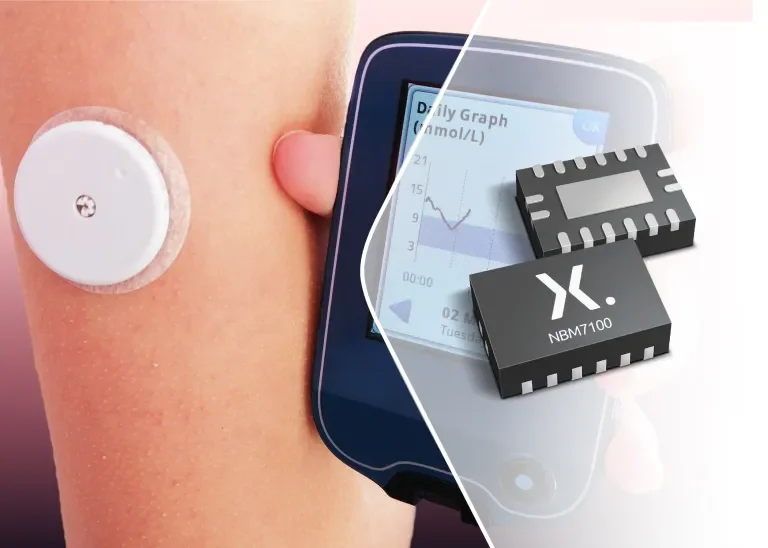
Claiming the industry’s first coin-cell battery life and power boosters, Nexperia has introduced the new NBM7100 and NBM5100 battery life booster ICs that extend the life of a typical non-rechargeable lithium coin cell battery by up to 10× compared to competing solutions. They also increase the peak output current capability of coin cells by up to 25× compared to coin cells without a battery booster.
Nexperia said the new battery management ICs “will reduce the amount of battery waste in low-power IoT and other portable applications, while making coin cells a viable power source for applications which could previously only operate from AA- or AAA- batteries.”
CR2032 and CR2025 lithium coin cells, with higher energy density and longer shelf life, are commonly used in low-power applications, including devices with low-power Wi-Fi, LoRa, Sigfox, Zigbee, LTE-M1 and NB-IoT transceivers, said Nexperia, but because of their relatively high internal resistance and chemical reaction rates their usable capacity when under pulsed-load conditions is reduced.
The new NBM7100 and NBM5100 devices solve this problem with two high-efficiency DC/DC conversion stages and an intelligent learning algorithm. The first conversion stage transfers energy from the battery to a capacitive storage element at a low rate, while the second stage uses the stored energy to provide a regulated (programmable from 1.8 V to 3.6 V) high pulse (up to 200 mA) current output, explained Nexperia.
In addition, the intelligent learning algorithm monitors the energy used during repetitive load pulse cycles and optimizes first stage DC/DC conversion to minimize the residual charge in the storage capacitor. When not performing an energy conversion cycle (standby state), these devices consume less than 50 nA.
Both devices feature a low-battery indicator and brownout protection, which inhibits charging of the storage capacitor when the battery is near the end of life. They also include a serial interface for configuration and control by a system microcontroller (I2C for the NMB7100A and NBM5100A and a serial peripheral interface (SPI) for the NMB7100B and NBM5100B versions). The operating temperature range is -40°C to 85°C, making them suitable for commercial indoor and industrial outdoor environments. The NBM5100A/B also includes a capacitor voltage balancing pin for super-capacitor-based implementations.
Both devices can extend the lifetime of lithium primary batteries, including coin cells, lithium thionyl (ex: LS14250 1/2 AA) and emerging paper printed types, which reduces maintenance by extending the time interval between battery replacements. The NBM5100A/B and NBM7100A/B battery boosters are available in a small DHVQFN16 package measuring 2.5 × 3.5 × 0.85 mm.


